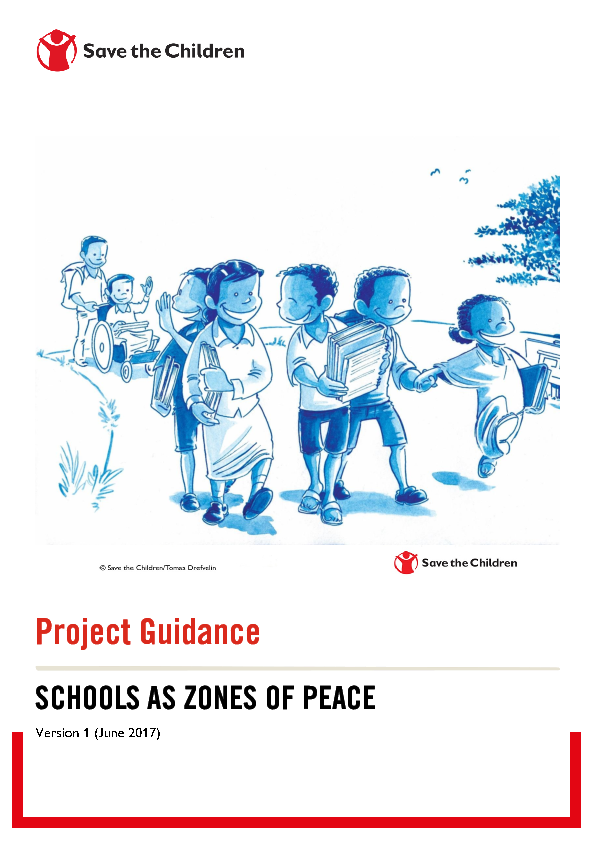
Manuals, Toolkits and Guidance
Schools as Zones of Peace
Publication year:
2017
English, French,Arabic,Swahili,Kurdish
Format:
Publisher:
Save the Children Norway
Save the Children has developed a project that aims to link the global work done on protecting education from attack to what happens at school level in affected countries. Schools as Zones of Peace is a Save the Children led project that aims to secure boys and girls’ protection at school, and avoid that education is disrupted because of armed conflict. The project builds on the Schools as Zones of Peace-model that was successful in ensuring children’s access to education in Nepal during the civil war, and uses components from this while linking it to the Safe Schools Declaration. In the project, we work with children, school management and local communities, and work to influence local, national and global policies. Locally, the project aims to secure protective learning environments in conflict and post-conflict situations, raise awareness among communities, school management and children, and build local and national level engagement to protect education. This includes using participatory tools and methods to engage children. This is a way to implement the Safe Schools Declaration through a bottom-up approach by engaging local schools and communities. Where the context allows, we work through partners to engage armed non-state actors (ANSAs) among others to not disrupt education. Globally, we aim to link experiences from these countries to the global advocacy and policy work.
This project links child protection and education across the interventions. One of the key aspects of the project is to address the issues one has uncovered (for instance ensuring that documentation is follow-up by providing a response, either through referral or through direct support). It is thus important that education and child protection colleagues work together in designing and implementing this project. As Save the Children works to reach the most marginalised children, it is important that when conducting activities, the organisation pays special attention to the children who are not the most vocal, and ensures that the activities are conducted in an inclusive and gender-sensitive way, promoting the participation of all children. Boys and girls should both be represented when conducting the activities.
Schools as Zones of Peace (SZOP) is primarily for any situation (conflict or fragile context) where children are facing disruption in education because of military use, occupation, attacks on schools, forced recruitment or classrooms used as storage for military or weaponry. The project is linked to the Safe Schools Declaration (SSD), but endorsement of the SSD is not a prerequisite to implement the project in a given context. In some circumstances, implementation of the SZOP project may lead to a state endorsing the declaration.
Working on a project to protect education from attack is sensitive, and may not be appropriate in all contexts. Carefully consider whether this project is appropriate, and take care to ensure that none of the activities chosen put any staff, children or local communities at risk or in harm’s way. In some contexts, none or only a few of the presented activities may be possible, while in others, it is appropriate to conduct all the activities. This guide merely aims to present the key activities as they are currently being implemented in the Schools as Zones of Peace countries, but the responsibility for programming will ultimately lie with the implementing organisation choosing the activities. Please take care to contextualise any activities chosen, and be aware that not all tools will be appropriate in all contexts, and most will have to be contextualised.
Below is a short video presentation of the SZOP implemented in the Democratic Republic of Congo:
Read full abstract
View & Download
Autodetected language
English
8 Documents
Other languages
French
2 Documents
Arabic
2 Documents
Swahili
1 Documents
Kurdish
1 Documents
Document information
Publisher
Format
Content type
Rights
© Author/Publisher
Keywords
Found a mistake? Help us improve!
If you have noticed a document assigned to the wrong author or any other inaccuracies, let us know! Your feedback helps us keep our data accurate and useful for everyone.
Share
Link
